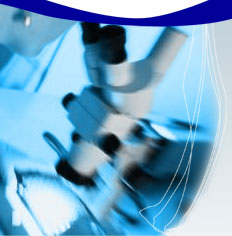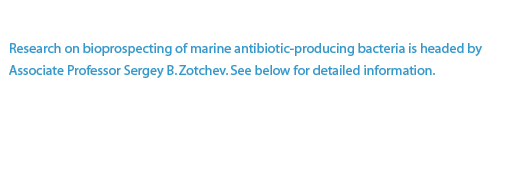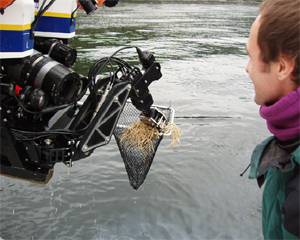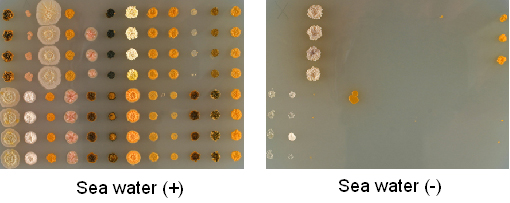





Infectious diseases caused by pathogenic bacteria and fungi represent a serious challenge for current pharmacology, as they still account for millions of premature deaths all over the world. Rapid development of antibiotic resistance by many pathogens, along with the toxicity of some of the currently used antibiotics prompt the constant search for and development of novel anti-infective agents. Microorganisms, especially bacteria belonging to the order Actinomycetales, are the most common producers of antimicrobial agents. Traditionally, antibiotic-producing organisms were isolated from the terrestrial sources, and only recently the potential of marine microorganisms in this respect became apparent. During the last decade many bacterial producers of novel antibiotics with unusual structures and properties have been isolated from the sea. Norwegian marine environment is largely unexplored, and might provide a rich source of the microorganisms producing novel and efficient anti-infective compounds. In the current project financed by the Research Council of Norway, and started at the end of 2003 in co-operation with SINTEF and Trondheim Biological Station, we are harvesting samples from the marine environment in the Trondheim fjord with the aim to isolate antibiotic-producing bacteria. The collection of such bacteria are being screened for antibiotic activity using a panel of test organisms.
The results obtained so far show that marine sediments and sponges from the Trondheim fjord are excellent sources for isolation of actinomycete bacteria (Figure 1).
Figure 1. Sponges have been collected in the Trondheim fjord in October 2005 with the help of remote operated underwater vehicle “Minerva”.

On the next picture one can see the morphological diversity of actinomycetes
isolated from marine sponges collected in the Trondheim fjord (Figure 2).
Figure 2. Morphological diversity of actinomycetes isolated from the sponges collected in the Trondheim fjord.

Interestingly, growth of many of the actinomycete isolates appear to be dependent on the presence of salt in the growth media, suggesting that these bacteria have adapted to the marine environment (Figure 3).
Figure 3. Some of actinomycete isolates can not grow without sea water. Note also that morphology of those able to grow without sea water changes drastically.

Preliminary tests for antimicrobial activity of the isolated bacterial strains clearly demonstrate the ability of many of them to synthesise antibacterial compounds (Figure 4).
Figure 4. Inhibition of test bacterium growth is seen as clear zones around the spots where the extracts from actinomycetes have been applied.

Most interesting substances with antibiotic activity are being identified, purified and further characterised in co-operation with SINTEF Industrial Biotechnology group headed by Dr Trond E. Ellingsen. We also aim at establishing marine environmental DNA libraries in co-operation with Prof Svein Valla at the department of Biotechnology (NTNU). These libraries, upon expression in appropriate hosts, can be used in our anti-infective screening programme. Future directions could be to clone the genes governing antibiotic biosynthesis, to characterise and manipulate them with the aim of producing novel pharmaceuticals, or enhancing the productivity. This overall goal of the project is to further expand the possibilities for development of the industrial processes for the production of novel anti-infective agents.
Persons working on the project at NTNU:
Project co-ordinator: Sergey B. Zotchev
Espen Fjærvik – research scientist;
Sigrid Hakvåg – Ph.D. student;
Hanne Jørgensen – Ph.D. student;
Kerstin Engelhardt – Ph.D. student
Elena Ian – research assistant.
.....................
![]()
![]() Biopolymers
Biopolymers
![]()
![]() Biosyntesis
of L-Lysin from Methanol
Biosyntesis
of L-Lysin from Methanol
![]()
![]() Engineered
antibiotic synthesis
Engineered
antibiotic synthesis
![]()
![]() Gene
Expression
Gene
Expression
![]()
![]() Osmoregulation
Osmoregulation
![]()
![]() Metabolic
Engineering
Metabolic
Engineering
